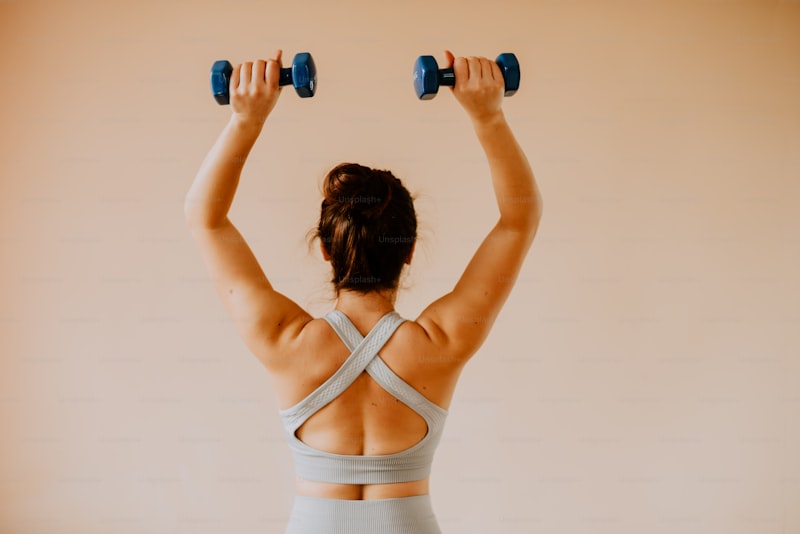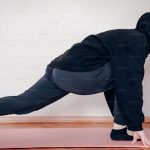You may have heard of the Iliotibial band, aka the ITB. It is an amazing piece of engineering but most people only learn of it when it causes pain!. Usually, knee pain. Here’s what every yogi needs to know to keep the ITB happy, healthy and pain-free.
Anatomy
The ITB is a tough band of connective tissue that runs from the side of the pelvic bone down the outside of the thigh to just below the knee joint. At the top end, the gluteus maximus muscle connects to it from the back and another muscle called tensor fascia latae joins it from the front. These muscles work in a finely tuned tug-of-war to get just the right amount of tension in the top of the ITB.
The abdominal oblique muscles link the ITB to the trunk and they create tension upwards in the ITB. Meanwhile, below the knee, the shin muscles work to create downward tension.
Function
The ITB is amazing. It stabilises the hip joint in the upright position and strengthens the outside of the knee joint. At. The. Same. Time. A miracle of the body’s engineering. All this muscle action causes increased tension in the ITB which provides stability, but that is not all the ITB needs to do.
While the muscles are busy creating tension, the knee end of the ITB needs to be free to move. Here the ITB slides backward and forward over the side of the knee joint as it bends and straightens.
Common ITB Problems
The main problems with the ITB come when it is not moving efficiently. Either there is too much tension; there’s a weak or overactive muscle attached to it, or there is tightness in the muscles and connective tissues around it.
Runners knee – Here there is too much tension in the ITB and it does not glide freely over the knee, causing pain and inflammation over the outside of the knee. This comes forth especially on repetitive activities like running and walking.
Snapping hip syndrome – This is when the ITB becomes painful at the hip and may ‘snap’ or click as the joint moves.
Anterior knee pain – Knee pain caused by general tightness in the myofascial elements of the leg. This can be muscles (hamstrings, quads, calf or glutes) or the connective tissues and fascia that surround the muscles and attach them to the bones eg the ITB.
Tips for a Happy ITB
This is really easy. All you have to do is strengthen what is weak; lengthen what is tight, and get everything working together. But how?
- Stretching – unfortunately, it is almost impossible to stretch the ITB itself because you can’t actually make it longer. But what you can do is stretch and lengthen the muscles and other connective tissues that attach to it, that in turn reduces the tension in the ITB. So, stretching the glutes, tensor fascia latae, the lateral abdominal muscles, even all the way up into the shoulder can help.
- Regain muscle balance – it is usually the glutes that are weak and tensor fascia latae that is overactive. Strengthening the glutes and stretching the tensor fascia latae is the way forwards.
- Soft tissue work – many people swear by deep tissue massage and foam rolling the ITB in an effort to release tension in it. This can be really painful and I have found it to be less effective than stretching or strengthening. Whereas, you can stretch and strengthen for great results without the pain.
How Yoga Can Help
Yoga is FABULOUS at preventing and treating ITB problems. Lots of yoga poses stretch and strengthen around the ITB really well. Here are a few favourites:
- Standing side bends – candrāsana, or crescent pose, is lovely at stretching the structures above the ITB. Start from tadasāna, inhale both arms overhead then exhale to bend to one side while the hips move to the opposite side. Inhale to return to upright and repeat to the other side. This can also be done in kneeling if the standing version is too uncomfortable or balance is an issue.
- Triangle – trikonāsana stretches the lateral hip on the upper side as well as the side of the trunk.
- Gate or beam – parighāsana is a kneeling side bend with one leg extended out to the side which also targets the side of the trunk beautifully
- Half lord of the fishes – ardha matsyendrāsana really targets the side of the hip if attention is paid to grounding both sit bones before starting the twist.
- Supine knee rolling – I like to have the arms outstretched for this and focus on grounding the shoulder blades as the knees roll to the side. You may need to play with different leg positions to find your own lateral hip and trunk tightness. Try feet stacked and not stacked, legs crossed or even supine pigeon (kapotasana) leg.
- Glutes, glutes, and more glutes – engaging the glutes in poses will not only strengthen them but, through reciprocal inhibition, will help to reduce overactivity in the tensor fascia latae. Try wrapping the front hip under in warriors (virabhadrāsana) 1 & 2; rolling the front knee outwards in triangle (trikonāsana); and drawing the outer thighs back in tadasana, chair pose (utkatāsana) and down dog (adho mukha śvāsāsana)
A word of caution – if you already have ITB problems, practice so that none of these poses are painful. Aim for a mild stretch feeling that eases or stays the same as you hold the pose. Modify the poses if you need to, and build back to the full versions as you become more comfortable.
Your ITB is wonderful and clever. With a little care and attention in your yoga practice, you can keep it in condition. Love your ITB I say, and it will love you back!













